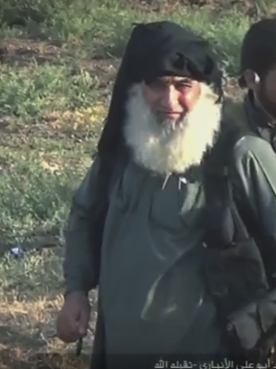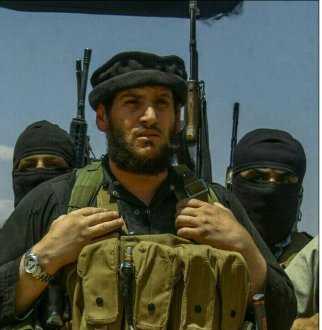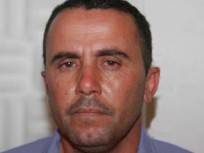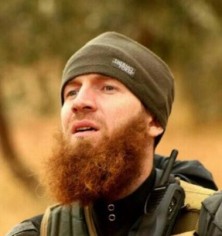By Kyle Orton (@KyleWOrton) on September 18, 2016

Raqqa
The Coalition announced on Friday that it had killed Wael al-Fayad, more fully Wael Adil Hasan Salman al-Fayad, also known as Wael al-Rawi, Dr. Wael, and Abu Muhammad al-Furqan, a reference no doubt to al-Furqan Media, IS’s oldest and most important propaganda organ, which al-Fayad controlled. The head of IS’s Media Council, thus a key member of the group’s propaganda output, al-Fayad was a member of its Shura Council. The obscurity of his name is likely a testament to his seniority and importance within IS. [UPDATE: This turned out to be correct, though Abu Muhammad’s real name was Wael al-Ta’i, as IS revealed in May 2021, and he had also used the names “Ahmad al-Ta’i”, the media emir appointed in “the State’s” second cabinet back in 2009, and “Abu Ubayda Abd al-Hakim”, the mysterious senior IS operative who made a series of media “appearances” in 2011 and signed several captured letters addressed from IS-centre to the wilayats after 2014]
Downfall
The “precision strike” that killed al-Fayad took place near Raqqa on 7 September.
There were rumours that al-Fayad was deceased in late August and an Iraqi military official claimed that Baghdad had killed al-Fayad in a Special Forces raid on 11 September in Baaj district of Ninawa Province. Though these were clearly untrue, the Iraqi spokesman is likely correct that al-Fayad’s roles included not just directing al-Furqan but sitting on the board at Amaq News Agency and al-Naba newspaper.

Abd al-Rahman al-Qaduli (Abu Ali al-Anbari)
Interestingly, Issam al-Barqawi (Abu Muhammad al-Maqdisi) seems to have known about al-Fayad’s downfall from the day after it happened. Al-Barqawi, the most influential Jihadi-Salafist scholar, remained pro-al-Qaeda after the schism with IS, of whom he has been, with some nuance, a stern critic.
Role
Al-Fayad was, as I noted in my profile of IS’s leadership, an extremely opaque figure: no known photographs or audio recordings; even his name was uncertain. Near-invariably with such figures—Abd al-Rahman al-Qaduli (Abu Ali al-Anbari) is the classic case—this is a reflection of the operative’s importance.

Taha Falaha (Abu Muhammad al-Adnani)
Al-Fayad “operated as [IS’s] Minister of Information,” the Pentagon says, a reference to his position at the top of the Media Council, and was a member of the Shura Council. Al-Fayad took over the Media Council position from Amr al-Absi (Abu al-Atheer), though al-Fayad seems to have been the General Manager of Media before this, with an important operational, day-to-day role in the production of of IS’s propaganda, including its gruesome execution videos. Al-Fayad was a “close associate” of Taha Falaha (Abu Muhammad al-Adnani), according to the Pentagon. Falaha, the caliph’s effective deputy, was killed by the Coalition on 30 August.
At the time of his death, Falaha was also the governor of Syria, the director of external terrorism, and IS’s spokesman, a post he had held since 2011, at which time he also headed the Media Council, a position later ceded to al-Absi. This association with the Media Council led me to suggest that al-Fayad was a candidate to take over some of Falaha’s duties. Raqqa is Being Slaughtered Silently believes this was the case. Regardless, al-Fayad is said to have been put in charge of apportioning Falaha’s responsibilities by the Shura Council. As to who will replace al-Fayad atop the Media Council, the available information indicates Bandar al-Shaalan is the likely candidate.
Past as Prologue
As Craig Whiteside noted, al-Fayad’s and Falaha’s near-simultaneous demise is this is the third time the U.S. has removed IS’s spokesman and media emir in quick succession.
In June 2006, after al-Qaeda in Iraq (AQI) rebranded as al-Majlis Shura al-Mujahideen (MSM), its official spokesman, Abu Maysara al-Iraqi, was killed. Abu Maysara, a Salafi zealot who was only 24-years-old when the Saddam Hussein regime collapsed, was also the deputy of MSM’s new Media and Communications Department. The first MSM media leader is unknown, but he was evidently dead or in prison before October 2006.

Khalid al-Mashadani
When MSM was folded into the Islamic State of Iraq (ISI) later in 2006, its first spokesman was Muharib al-Jibouri; he was killed on 1 May 2007. ISI’s media chief at its foundation, Khalid al-Mashadani (Abu Zayd al-Mashadani, Abu Muhammad al-Mashadani), was arrested on 4 July 2007.
(If al-Mashadani is remembered to history it will surely be as the lead operative in one of the most successful disinformation operations, convincing the U.S. that Abdullah Rashid al-Baghdadi, the nominal leader of MSM, was a fictional character. This not only carried over into the belief that ISI’s first leader, Abu Umar al-Baghdadi, was fictional—which he was not; he was an appallingly competent man named Hamid al-Zawi—but served to shield al-Qaduli, even then one of ISI’s most senior leaders, who had been “Rashid” and whom the Americans had picked up and imprisoned without ever knowing who they had.)
This is suggestive of a common U.S. method of attacking IS’s media wing—and the fact it worked again demonstrates IS’s continuity.
Impact
The wisdom of eliminating a terrorist organization’s leadership is open to question, but there is no doubt that the U.S. has become successful at the targeted killing of IS’s leaders, particularly when it comes to the “original leadership“—those with the organization from soon after it moved to Iraq in 2002 and before the demise of its founder, Ahmad al-Khalayleh (Abu Musab al-Zarqawi), of whom there are only around half-a-dozen now left, at most.

Tarkhan Batirashvili (Abu Umar al-Shishani)
Falaha and al-Fayad were assessed by the U.S. to be among the top-five IS leaders and two of the “very few” to have direct access to Ibrahim al-Badri (Abu Bakr al-Baghdadi). One U.S. official also highlighted as important an overlooked strike in Mosul on 25 June, which killed Basim al-Bajari and Hatim al-Hamduni. Al-Bajari was conceivably a tier-one leader. If so, however, that would be very much the exception for taking place in Iraq: apart from Tarkhan Batirashvili (Abu Umar al-Shishani), the major losses for IS this year—al-Absi, al-Qaduli, and Falaha—took place in Syria. A shame, therefore, that the Coalition focus remains in Iraq.
IS’s institutional structure makes most department and Council leaders essentially expendable. There are occasional exceptions like Falaha and al-Qaduli, whose deaths, while not a mortal threat, struck a psychological and ideological blow, and removed talents that cannot be quickly replaced. The signs around al-Fayad are that he was more in the category of these men. The failure to publish al-Naba on 10 September (online 13 September), only the second time a copy has not been produced since its founding in December 2015, suggests some organizational perturbation in the wake of al-Fayad’s killing. Additionally, to the extent that al-Fayad confirms the impression garnered last year and underlined several months ago, that the U.S. has infiltrated IS, this will cause problems for the takfiris.
* * * * *
UPDATE: On 22 September 2016, a list of slain IS members was published, which noted that, on 6 September, the Coalition had cut down Abu Harith al-Lami, al-Fayad’s media deputy, overseeing propaganda output in all areas controlled by IS in Syria and Iraq. It is unlikely that al-Fayad’s demise is unrelated to the strikes that killed Falaha and Abu Harith.
UPDATE 2: On 10 October 2016, IS acknowledged al-Fayad’s death.
UPDATE 3: On 11 November 2016, IS’s English-language magazine, Rumiya, had an obituary for al-Fayad.
UPDATE 4: On 5 April 2017, the eighth edition of Rumiya had an obituary for Ahmad Abousamra (Abu Sulayman al-Shami), which revealed that al-Fayad had been the “general caretaker” of IS when he was killed, a testimony to the power of the media department within the organization.
Pingback: The Islamic State and Chemical Weapons | The Syrian Intifada
Pingback: Abu Bakr al-Baghdadi Calls for the Islamic State to Stand Firm in Mosul | The Syrian Intifada
Pingback: Abdallah Najem al-Jawari: A Key Early Leader of the Islamic State | The Syrian Intifada
Pingback: Death of a Caliphate Founder and the Role of Assad | The Syrian Intifada
Pingback: An American Who Rose to the Top of the Islamic State | The Syrian Intifada
Pingback: The Islamic State Expands Its Definition of Heresy | The Syrian Intifada
Pingback: U.S. Treasury Targets Al-Qaeda in Syria | The Syrian Intifada
Pingback: America Sanctions the Islamic State’s Intelligence Chief | The Syrian Intifada
Pingback: The Islamic State’s Media Apparatus and its New Spokesman | The Syrian Intifada
Pingback: How the Islamic State Claims Terrorist Attacks | The Syrian Intifada
Pingback: Coalition Prepares the Ground for Mosul Offensive | The Syrian Intifada
Pingback: Activist Group Lists Ten Most Important Islamic State Leaders Killed | The Syrian Intifada
Pingback: The Coalition’s Flawed Endgame Strategy for the Islamic State | The Syrian Intifada
Pingback: Ahmad Abousamra: An American Who Rose to the Top of the Islamic State | The Syrian Intifada
Pingback: An American Jihadist At the Top of the Islamic State | The Syrian Intifada
Pingback: America Sanctions Operatives of the Islamic State’s Chemical Weapons Department | The Syrian Intifada
Pingback: The Coalition Targets Islamic State Propagandists and External Terrorists | The Syrian Intifada
Pingback: Islamic State Recommends More Gentleness in Dealing With Sinners | The Syrian Intifada
Pingback: Islamic State Profiles the Godfather of its Media Department | Kyle Orton's Blog